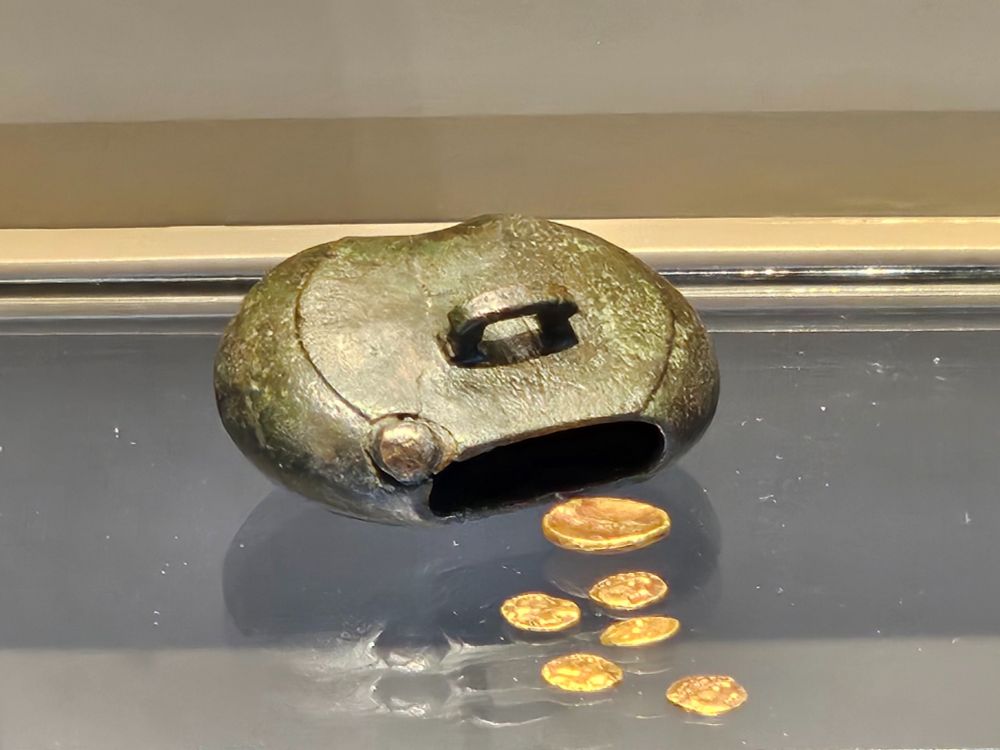Exhibit of the Month December 2020

Coins – for us today, it is a self-evident means of payment, which has been increasingly replaced by other payment methods for some time now and is currently even being discussed in general.
In the Celtic world, on the other hand, coinage in the 4th century BC represented an innovation compared to the previously customary barter economy. Presumably, the money economy came from the Mediterranean region to southern Germany in the luggage of Celtic mercenaries, who were hired by Greeks, for example, and paid in the form of coins. From the 3rd century BC, coins were also minted in the Manching oppidum.
Our object of the month for December is a bronze purse, which excavations in the Celtic city of Manching brought to light and which may date to around 200 BC. With a width of just under 4 centimeters, we could speak of a “practical pocket format” here. The mini wallet could apparently be closed with a leather or fabric strip, as indicated by a small knob on the top. When they were found, their contents consisted of 6 small gold coins, which come from southern Bavaria and Bohemia and whose weight ranges between 0.3 and 2 grams.
The slightly larger, slightly curved specimen – positioned directly in front of the slit in the picture – is a so-called rainbow bowl. Where does this curious name, which is already documented in the 17th century, come from? Since the shiny gold coins were often discovered on the ploughed fields after thunderstorms, the legendary idea spread that the rainbow was covered with gold. And of course he loses this disguise where he touches the ground! Features of this image have been preserved to this day in the Sterntaler fairy tale or in the story of the pot of gold waiting at the end of a rainbow
